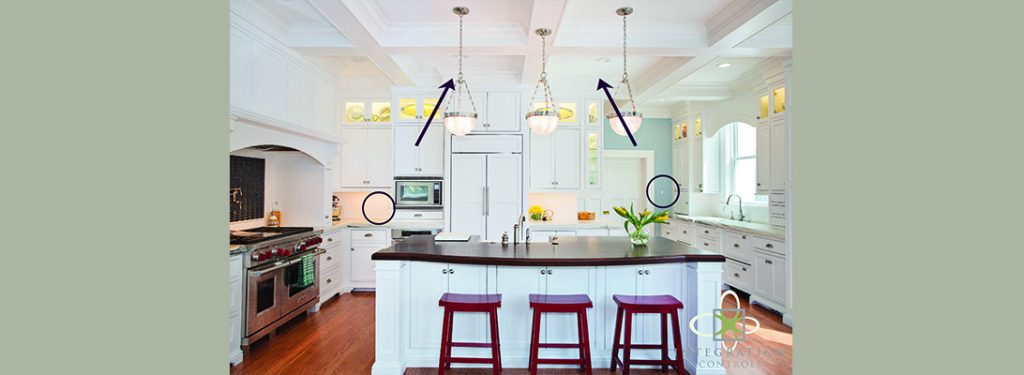
Photo by Forte Photography.
More homeowners are opting for distributed audio and video throughout the house.
By Ed Wenck, CEDIA Content Marketing Manager
When your clients ask for “tech” in the kitchen and bath, the most common requests will likely be for audio and video in those rooms.
Distributed audio in the home (music from a single source that’s sent to different rooms) has grown in popularity — in fact, more people are listening to music than ever before. According to Nielsen Music, Americans spent 32 hours a week listening to music in 2017 — up from 26.6 in 2016.
While there’s a plethora of wireless systems on the market, hard-wired systems aren’t subject to the instability and frustrations of Wi-Fi, and wired speakers afford a builder or designer the opportunity to make a system’s speakers disappear.
The source for the music is often a component rack with any number of available libraries, the most popular currently being streaming services. Audio and video signals are distributed throughout “zones” in the home, and a good integrator can ensure that each “zone” can operate independently of the others.
Two kinds of speakers are often used in kitchen and bath audio installations:
- Architectural speakers with removable covers. These are fairly common: in-wall or in-ceiling speakers, light enough to be supported by mechanisms that clamp right to drywall, and usually hidden behind a magnetic grille (which can often be painted). In-ceiling applications are perfect for distributed, multi-room audio applications.
- “Invisible” speakers. These gadgets are designed so that there’s minimal sonic degradation when they’re covered by literally any wall treatment, from mud to veneers, and even plaster.
Video is becoming increasingly popular in kitchen and bath design, too. From mirrors that do double-duty as televisions to screens on motorized mounts that can drop from the ceiling, a TV can be mounted or hung literally anywhere a client desires, and even disappear when it’s not in use. Not just for entertainment, the screens can also give a homeowner with a video doorbell or CCTV the security of seeing who’s at the door. When coupled with voice-controlled interfaces, hands-free operation of any system in the kitchen and bath is now a reality — which comes in handy when the client’s cleaning chicken for dinner.
By bringing an integrator into the design process at the outset of any remodeling or new-build project, designers will ensure that their clients wind up with audio and video components where they’ll use them most, and further guarantee that all the home’s systems work together with minimal friction (not to mention client frustration.) Home technology integrators are also well-versed in the issues that naturally humid rooms can have on electronic gear, and know how to mitigate the effects of moisture in those spaces.
To find a certified CEDIA integrator near you, visit the CEDIA.org finder service at www.cedia.org/find-a-cedia-professional.








